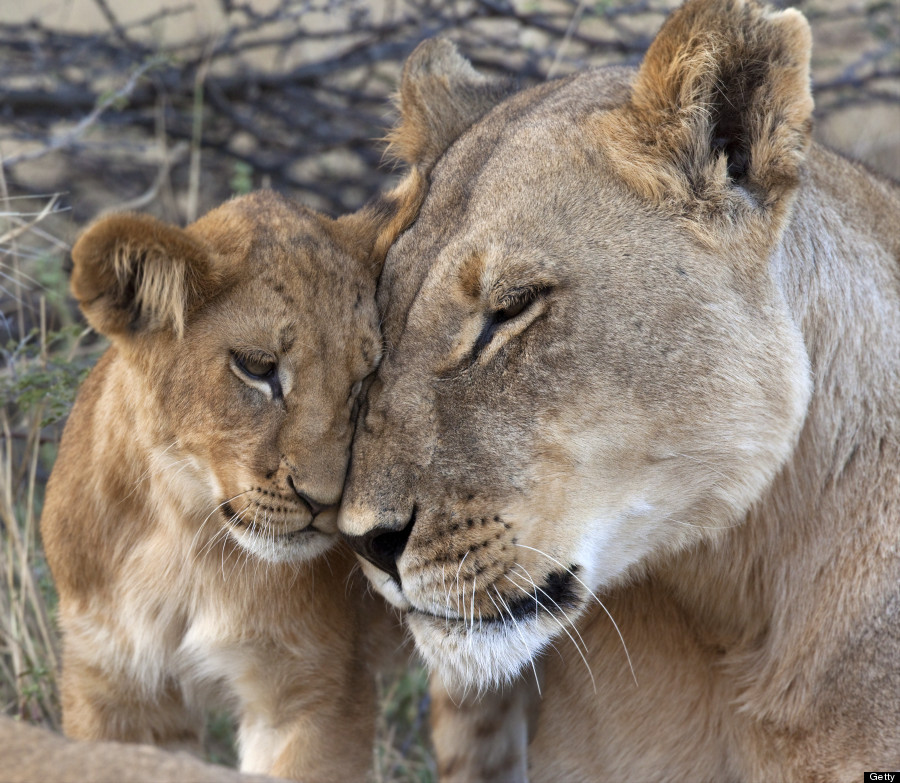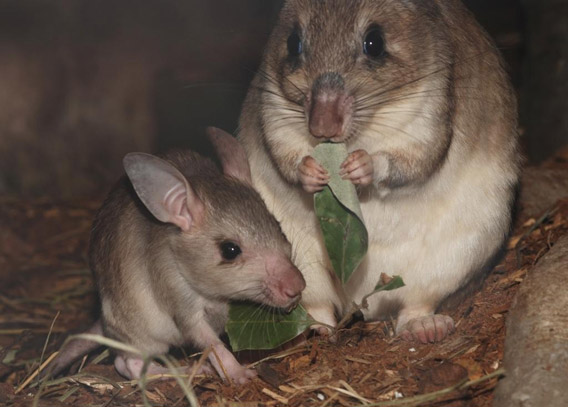Source(google.com.pk)
A baby harp seal rests on the Arctic ice. Its mother can distinguish it from hundreds of others by scent alone.
Baby elephants are born big, standing approximately three feet (one meter) tall and weighing 200 pounds (91 kilograms) at birth. They nurse for two to three years, and are fully mature at 9 (females) to 15 (males) years of age.
Lynxes are known for the black tufts of fur on the tips of their ears.
Mother black bears are notoriously protective of their cubs, who stay with their mothers for about two years.
Usually solitary animals, leopard cubs live with their mothers for two years, learning how to hunt. Cubs are born in pairs and are grayish with no discernible spots.
Bobcat kittens are born in litters of one to six and will stay with their mother for up to one year before heading off on their own.
Dutiful mothers, female polar bears usually give birth to twin cubs, which stay with her for more than two years until they can hunt and survive on their own.
Cheetah mothers typically give birth to a litter of three cubs, all of which will stay with her for one and a half to two years before venturing off on their own. When interacting with her cubs, cheetah mothers purr, just like domestic cats.
Black bears are excellent climbers, scaling trees to play, hide, eat, and even hibernate.
Female crocs lay their eggs in clutches of 20 to 60. After the eggs have incubated for about three months, the mother opens the nest and helps her young out of their shells.
Clementine and Oliver rest on a picnic table after playing in the dog park.
Sasha tries to get every last lick out of an empty ice cream container.
Scientists estimate only about 3,000 wild tigers are left in the entire world. Tiger territory once stretched from Turkey to the Russian Far East and just a century ago, before the terrible toll of hunting and habitat destruction, 100,000 tigers inhabited the wilds of Asia. Now their descendents hang on in a tiny fraction of their former range, prowling fragmented pockets of habitat where keeping enough tigers alive to breed is increasingly difficult. Three of the nine tiger subspecies (Bali, Javan, and Caspian tigers) became extinct during the 20th century, leaving only the half dozen living species featured in this gallery.
Recent studies show in just three tiger generations (21 to 27 years) the big cats' population has shrunk by 50 percent and their range has also been halved. Shrinking space and rampant poaching for traditional Chinese medicine present a formidable challenge to the future of wild tigers.
About half of all living tigers are Bengal tigers (pictured here), sometimes called Indian tigers because most live in that nation. Others are in Bangladesh, Nepal, Bhutan, China, and Myanmar. Given space and prey Panthera tigris tigris can thrive in many types of forests or grasslands, and the Bengal is the only subspecies that also inhabits mangrove forests, in the Sundarbans island group in the Bay of Bengal.
Tigers tend to be solitary animals but where food is plentiful they can be found in relatively great densities, which makes India perhaps the best place to spot them. Bengal tigers are the world's most likely to enjoy an abundance of pigs, deer, and other hoofed prey. An average of 18 tigers can occupy 39 square miles in India's Corbett Tiger Reserve, while only a single Sumatran tiger could survive in that same area, and a male Amur tiger would need 10 times that amount, or 386 square miles.
Baby Animals Baby Animals Baby Animals Pictures Wallpaper With Their Mothers Names Clipart Coloring Pages Cute Cartoon Photos

Baby Animals Baby Animals Baby Animals Pictures Wallpaper With Their Mothers Names Clipart Coloring Pages Cute Cartoon Photos

Baby Animals Baby Animals Baby Animals Pictures Wallpaper With Their Mothers Names Clipart Coloring Pages Cute Cartoon Photos

Baby Animals Baby Animals Baby Animals Pictures Wallpaper With Their Mothers Names Clipart Coloring Pages Cute Cartoon Photos

Baby Animals Baby Animals Baby Animals Pictures Wallpaper With Their Mothers Names Clipart Coloring Pages Cute Cartoon Photos

Baby Animals Baby Animals Baby Animals Pictures Wallpaper With Their Mothers Names Clipart Coloring Pages Cute Cartoon Photos

Baby Animals Baby Animals Baby Animals Pictures Wallpaper With Their Mothers Names Clipart Coloring Pages Cute Cartoon Photos

Baby Animals Baby Animals Baby Animals Pictures Wallpaper With Their Mothers Names Clipart Coloring Pages Cute Cartoon Photos
.jpg)
Baby Animals Baby Animals Baby Animals Pictures Wallpaper With Their Mothers Names Clipart Coloring Pages Cute Cartoon Photos

Baby Animals Baby Animals Baby Animals Pictures Wallpaper With Their Mothers Names Clipart Coloring Pages Cute Cartoon Photos

Baby Animals Baby Animals Baby Animals Pictures Wallpaper With Their Mothers Names Clipart Coloring Pages Cute Cartoon Photos

Baby Animals Baby Animals Baby Animals Pictures Wallpaper With Their Mothers Names Clipart Coloring Pages Cute Cartoon Photos

Baby Animals Baby Animals Baby Animals Pictures Wallpaper With Their Mothers Names Clipart Coloring Pages Cute Cartoon Photos

Baby Animals Baby Animals Baby Animals Pictures Wallpaper With Their Mothers Names Clipart Coloring Pages Cute Cartoon Photos

Baby Animals Baby Animals Baby Animals Pictures Wallpaper With Their Mothers Names Clipart Coloring Pages Cute Cartoon Photos
No comments:
Post a Comment